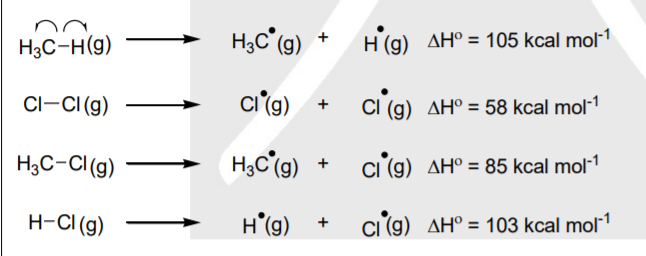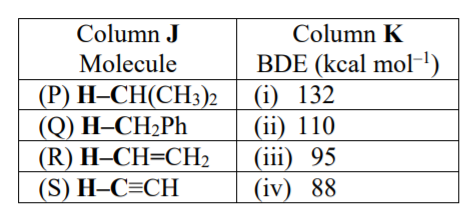Energy required to break one bond in DNA is approximately
~1eV
~0.1eV
~0.01eV
~2.1eV
The correct Answer is:A
Step by step video, text & image solution for Energy required to break one bond in DNA is approximately by Physics experts to help you in doubts & scoring excellent marks in Class 12 exams.
Topper's Solved these Questions
Similar Questions
Examine table 3 and express (a) energy required to break on bond in DNA in eV, (b) typical energy of a proton in a nucleus in eV, (c ) energy released in burning 1000 kg of coal in kilocalories.
View SolutionThe energy required to break one bond in DNA is 10−20J. This value in eV is nearly:
View Solution
Knowledge Check
- Question 1 - Select One
Minimum amount of energy required to remove a proton is approximately:
A2MeVB4 MeVC6 MeVD8 MeV - Question 2 - Select One
The energy required to break one bond in DNA is 10−20J. This value in eV is nearly:
A0.6B0.06C0.006D6 - Question 3 - Select One
Total energy required to break all the bonds in the gaseous state molecule of AB2 is xkJmol−1. Then the bond energy of the bond A-B in the molecule will be ________.
Ax2kJmol−1Bx3kJmol−1C2xkJmol−1D2x2kJmol−1
Express (a) the energy required to break one bond in DNA (10−10J) in eV.
(b) the kinetic energy of an air molecule (10−21J) in eV.
(c) the daily intake of a human adult (107J) in kilocalories.View SolutionThe amount of energy required to break a bond is same as the amount of energy released when the same bond is formed. In gaseous state, the enrgy required for hololytic cleavage of a bond is called Bond Dissociation Energy(BDE) or Bond Strength. BDE is affected by s-character of the bond and the stability of the radicals formed. Shorter bonds typically stronger bonds. BDEs for some bonds are given below:

Correct match of the C-H bonds(shown in bold) in column J with their BDE in column K is View Solution
View SolutionThe amount of energy required to break a bond is same as the amount of energy released when the same bond is formed. In gaseous state, the enrgy required for hololytic cleavage of a bond is called Bond Dissociation Energy(BDE) or Bond Strength. BDE is affected by s-character of the bond and the stability of the radicals formed. Shorter bonds typically stronger bonds. BDEs for some bonds are given below:

For the following reaction
CH4(g)+Cl2(g)light−−→CH3Cl(g)+HCl(g)
the correct statement isView SolutionThe net enthalpy change of a reaction is the amount of energy required to break all the bonds in reactant molecules minus amount of energy required to form all the bonds in the product molecules.What will be the enthalpy change for the following reaction.
H2(g)+Br2(g)→2HBr(g)
Given that bond energy of H2,Br2 and HBr is 435 kJ mol−1, 192 kJ mol−1 and 368kJmol−1 respectively. (Keep your answer in magnitude and in KJ/mol)View SolutionThe net enthalpy change of a reaction is the amount of energy required to break all the bonds in reactant molecules minus amount of energy required to form all the bonds in the product molecules.What will be the enthalpy change for the following reaction.
H2(g)+Br2(g)→2HBr(g)
Given that bond energy of H2,Br2 and HBr is 435 kJ mol−1, 192 kJ mol−1 and 368kJmol−1 respectively. (Keep your answer in magnitude and in KJ/mol)View Solution

